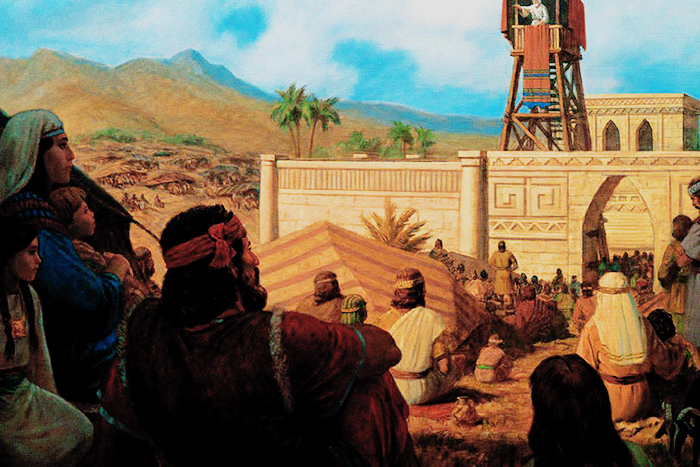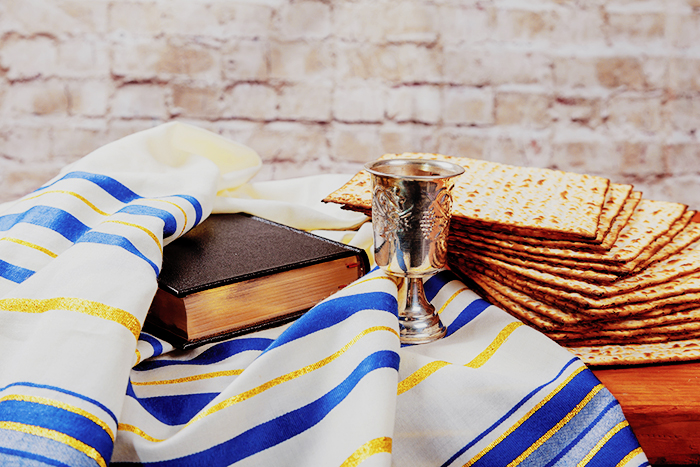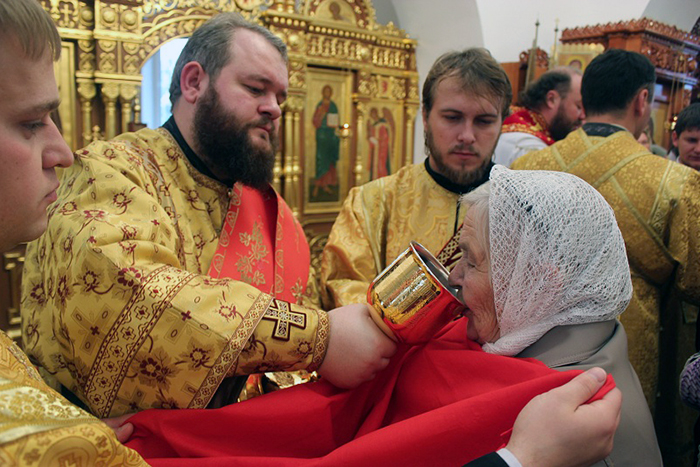
St. Paul was once intent upon visiting his new convert church in Corinth, and wrote them that he intended to visit them after passing through Macedonia in the north. But he said that the visit would not take place soon, for “I will stay in Ephesus until Pentecost” (1 Corinthians 16:8). By “Pentecost” Paul of course meant the Jewish feast of Pentecost, the feast of Weeks (Hebrew Shavuot) held fifty days after the Jewish feast of Passover. This feast celebrated the grain harvest, which began with the harvesting of barley during Passover and ended with the later harvesting of the wheat seven weeks later—hence its name, “the feast of Weeks”. Since it occurred fifty days after Passover, the Greek name for the feast was “Pentecoste”, from the Greek word for “fifty”. The question sometimes arises, “If Paul kept the Jewish feasts, shouldn’t we keep them also?” How did it happen that our Christian calendar is so different from the Jewish one? The answer to the question takes us back through the centuries and involves looking at the nature and evolution of Israelite religion from the days of Moses until the time of Christ.
In the ancient world all calendars revolved around the agricultural cycle, the timeless circle of the seasons, sowing and reaping, planting and harvesting. The deities were closely aligned with the fertility of the earth to the point where they might almost be understood as guardians of the earth’s natural powers, if not personifications of them (to use modern terminology). This agricultural calendar obtained for Israel at the time of the Exodus as well as for her pagan neighbours. But in Israel something different had happened as well. Their God was not so much to be identified with the powers of nature as He was the Lord and Creator of nature. He stood in a transcendent relationship to the earth’s natural powers of life and fertility. The natural deities of the pagans were earth-bound because their function involved guarding and preserving the powers of fertility found in nature. But Israel’s deity was not earth-bound, but “our God is in the heavens” (Psalm 115:3). Many of the pagan gods had consorts as well, female deities to go with male ones, because fertility involved both male and female. But Yahweh had no consort, and needed none. He was not male in the sense that the pagan gods were male. He was beyond sexual gender, transcendent over the powers of sex and fertility.
And this transcendence over nature translated into a transcendence above the powers and forces of history as well. Yahweh was not bound by historical forces, but could direct history in whatever way He chose so that it fulfilled His will. For pagans, it was the eternal circle of the seasons that mattered. History was a kind of circle too, in that for all its sound and fury, it did not signify much of anything. History was not going anywhere apart from the next spring and the next harvest. For all the rise and fall of kingdoms, there was nothing new under the sun. But Yahweh was pre-eminently a God of history. Through Him history broke out of its timeless eternal circle of endless return. It had a goal, and therefore a significance. Yahweh’s power was manifest not only in the natural fecundity of the earth, but also in the events of history as well.
That is why there is so much history in the Old Testament, for history was the arena in which Yahweh, the main protagonist of its pages, showed His power. He called Abraham out of Ur. He saved Israel out of Egypt. He brought them through the howling wilderness and fed them with manna from heaven and water from the rock. He drove out the nations from Canaan and settled Israel there. Ultimately the Lord of history would enter into the flow of history itself and become one of us. The point is that history in Israel was ultimately about God.
That was why the agricultural calendar that Israel inherited from the pagan world had an added layer to it. The first layer of its calendar it shared with everyone else in the agricultural world that depended upon sowing and reaping, planting and harvest. Israel harvested the first grains of barley in the spring and the later wheat some weeks after that. The lambs were born in the spring. Harvest came with rejoicing in the fall. These events found expression in the calendar. But from the time of the Exodus, God’s mighty acts in history found expression in its calendar too, for His decisive manifestation in liberating Israel from Egypt changed everything. “This month shall be the beginning of months; it shall be the first month of the year for you” (Exodus 12:2). The calendar still contained its agricultural core: “Three times in the year you shall keep a feast to Me. You shall keep the feast of unleavened bread. You shall keep the feast of harvest of the first-fruits of your labour, of what you sow in the field. You shall keep the feast of ingathering at the end of the year, when you gather in from the field the fruit of your labour.” (Exodus 23:14-16)—or, in later liturgical terminology, the feasts of Passover, of Weeks (or Pentecost), and of Ingathering (or Booths). This formed the first layer of the calendar, its spine. But superimposed upon this first layer was a second one, an historical one.

The spring may have been the time when the lambs were born, but it was also the time for the historical commemoration of the Exodus, when the lambs were slaughtered and their blood sprinkled upon the doorways of the Israelite homes in Goshen so that the destroyer would pass over them and not destroy their firstborn as it did the firstborn of the Egyptians. Now the feast in the spring contained an historical element, and was not simply a time to slaughter the lambs and have a feast. It was also a time to remember the Exodus. It was the same for the later feast of the first-fruits, when the grain was harvested, for fifty days after the Passover deliverance in Egypt Israel was at the foot of Sinai and received the Law (see Exodus 19:1). The first-fruits grain harvest of Pentecost was now freighted with historical significance, since it now also commemorated the giving of the Law, making Israel a kind of first-fruits dedicated to God. Same with the feast of the ingathering of the crops in the fall: as a reminder of the time before they had the Land and when they dwelt in tents (or booths) during their wilderness wandering, God commanded Israel to live in tents or booths during those days of ingathering (Leviticus 23:42-43). Harvesters then usually lived in booths out in the field while they worked harvesting the crops to save precious time travelling from the village to the field (thus the image in Isaiah 1:8). God now commanded all of Israel to live in such booths built in their homes so that they might better appreciate the gift of the Land they were given. In this way even the agricultural feast of ingathering contained an historical reminiscence of God’s care for them during their time in the wilderness.
Later in Israel’s history, other feasts of purely historical significance were added. The feast of dedication (or Hanukkah) in late November or December commemorated the re-dedication of the Temple after its profanation by Antiochus Epiphanes in the second century B.C. The feast of Purim commemorated the deliverance of Israel from the Persian persecution narrated in the book of Esther. These feasts were late and did not form part of the Mosaic core or Israel’s Sinaitic calendar. Accordingly they lacked the original layer of agricultural significance which wedded the People to the Land.
For Christians there is a third layer of significance to the Mosaic calendar, apart from the agricultural and the historical—a Christological layer. For Christians Passover (or “Pascha” to give its Greek name) is not simply about the birth of lambs in the spring, nor about the slaughter of the Passover lambs in Egypt. It was also and pre-eminently about the saving slaughter of Christ the Lamb of God which occurred at that time. Similarly, the feast of Pentecost is not simply about the grain harvest, nor about the gift of the Law on Sinai. It is also about the gift of the Holy Spirit on that day, when Christ wrote the Law into the hearts of His disciples, making us His dedicated first-fruits. Thus in Christ each layer builds upon the previous one.
But for the Christian the calendar is primarily about Christ. We commemorate Passover/ Pascha because that was when Christ died and rose from the dead. We commemorate Pentecost because that was when Christ poured out the gift of the Holy Spirit. We do not commemorate, for example, the feast of Booths because we have no record of Christ doing anything comparable on that day. The Jewish festal calendar is an inseparable part of the Jewish Law, the old covenant which God made with Israel, and for us the Law has been transcended in Christ. We are not Jewish, though we are heirs to Jewish history and Jewish Scripture. Our fundamental identity consists of the new humanity which Christ created by His Spirit, a humanity neither Jewish nor Gentile (Ephesians 2:14-15), but an entirely new creation. The old covenant with its Law was part of Israel’s history, to bring them to Christ, and now that Christ has come the Law no longer has any saving covenantal significance (Galatians 3:23-28). The old covenant with its Law (and its calendar) is obsolete, growing old and ready to vanish away (Hebrews 8:13). That is why Christians no longer keep the Jewish feasts—they are no longer under the Jewish Law.
Of course the old feasts have typological significance. The feast of Booths reminds us that in this age we are still in via, on pilgrimage, on our way to the heavenly Promised Land of the age to come. The Sabbath rest provides an image of our eternal rest in Christ (Hebrews 4). The day of atonement reminds us of how Christ provides atonement for our sins. Circumcision forms an image of the circumcision of the heart (Colossians 2:11). Typological fervour can find (or, if that fails, simple imagination can concoct) rich significance in the feasts and institutions of the Mosaic Law. But that does not mean that we Christians must keep the feasts, any more than that we must keep the Sabbath or practise circumcision. Paul was crystal clear about that (Galatians 4: 10-11, 5:2-4, Colossians 2:16-17). The Church ever afterward was also clear—compare St. Ignatius of Antioch’s hard words about Christians who wanted to “Judaize” or observe the Jewish Law in Magnesians 10:2-3: “Throw out the bad yeast, which has become stale and sour, and reach for the new yeast, which is Jesus Christ…It is utterly absurd to profess Jesus Christ and to practice Judaism. For Christianity did not believe in Judaism, but Judaism in Christianity”—i.e. Judaism reached in goal in Christ. From that day on, the Church refused to allow Christians to revert to Jewish practices. A Jewish convert (such as from the first centuries) may retain them, but only as having cultural significance. Circumcision no longer had any covenantal or religious significance whatsoever. All that mattered now was a new creation (Galatians 6:15).
We see now why Christians do not use the Jewish calendar—like the rest of the Law, it does not apply to Christians who in Christ have transcended the world with its religions and laws. The Law with its festal calendar had significance for Israel until Christ came. Our calendar is not agricultural, for our life is not rooted in earth’s soil, but in heaven’s glory. The mighty acts of God that we celebrate are those in which He has acted in Christ. Pascha is for us the time when He trampled down death by death. Pentecost is the time when He poured out the Spirit into our hearts. Like everything else worth having, our calendar is all about Christ.



